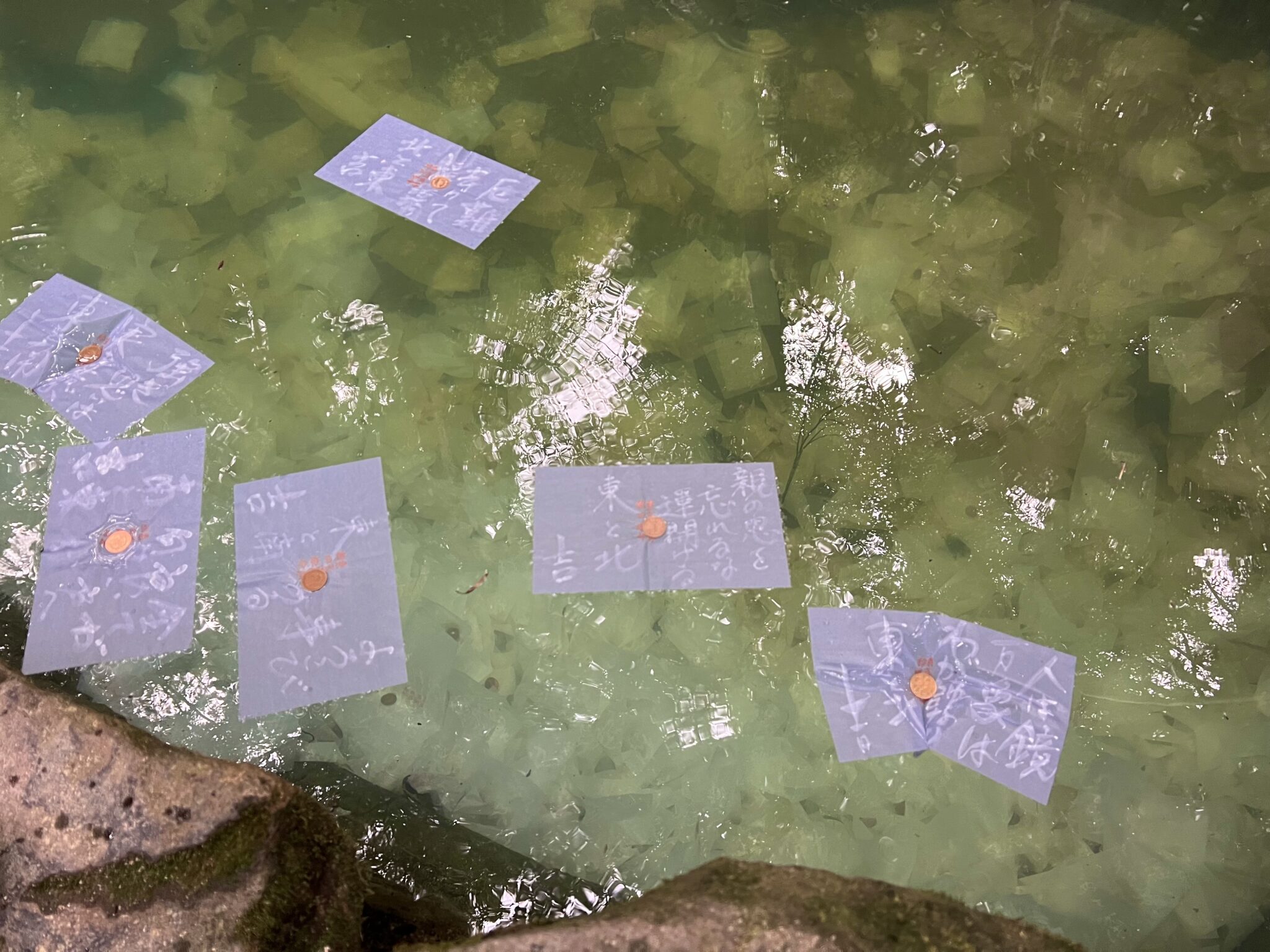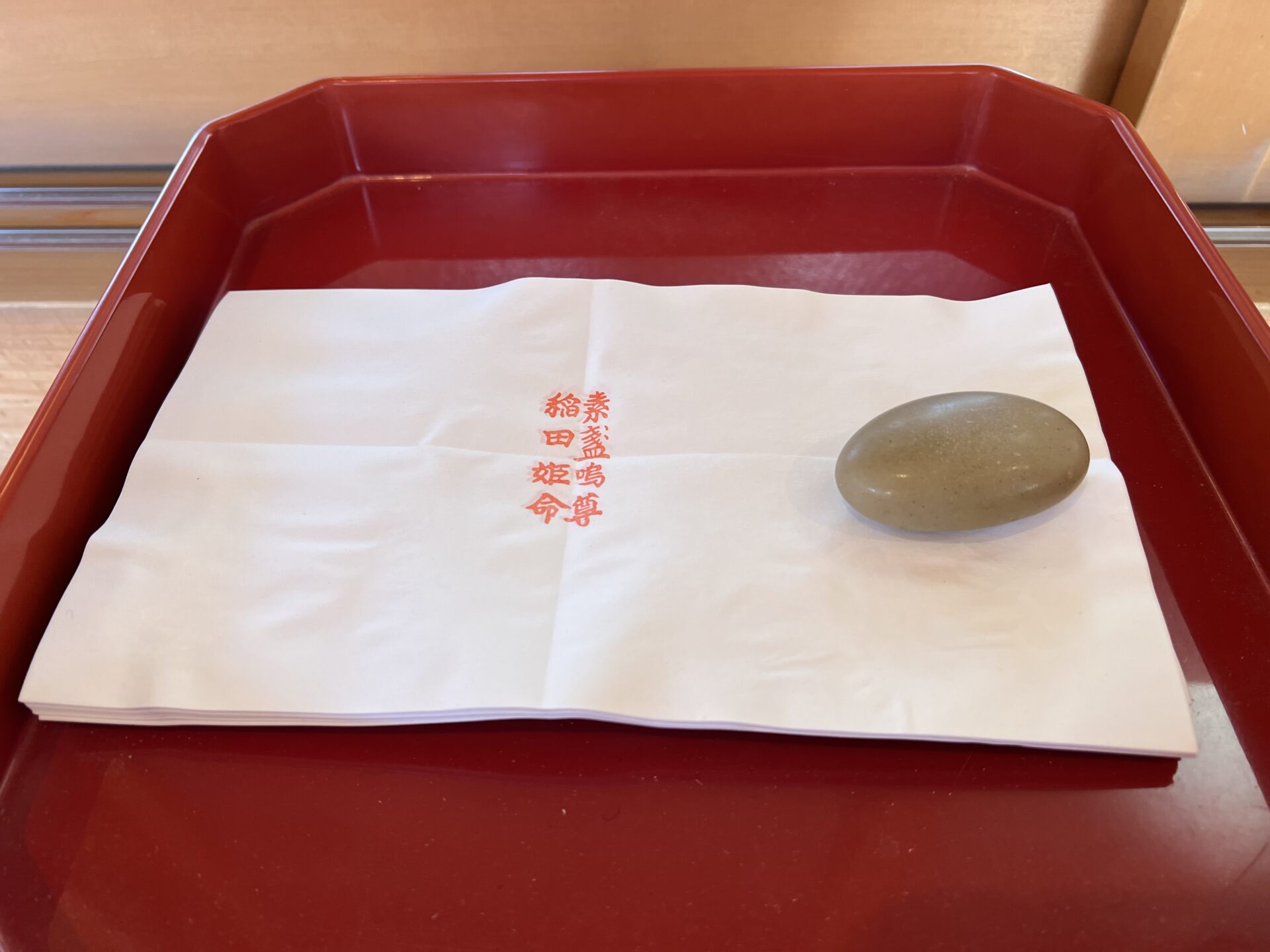In Izumo, I visited many shrines to seek out the gods. Since I was staying at Tamatsukuri Onsen, I first paid my respects at Tamatsukuriyu Shrine early in the morning. Then drove to Yaegaki Shrine. Yaegaki Shrine is famous for the wooden panel paintings of Susanoo-no-Mikoto and Inadahime(12th century), which I was looking forward to seeing as I had seen them in textbooks and other books before. It seems to be about 15 minutes by car or bus from JR Matsue Station, so not far from the center of the city.
As you pass through the leisurely countryside, you’ll see a red banner with “Yaegaki Shrine” written on it and an old torii gate. Perhaps because it was a three-day weekend close to the New Year, there were far more worshippers than I had expected. Finally, I entered the world of the two gods of matchmaking from Japanese myths.
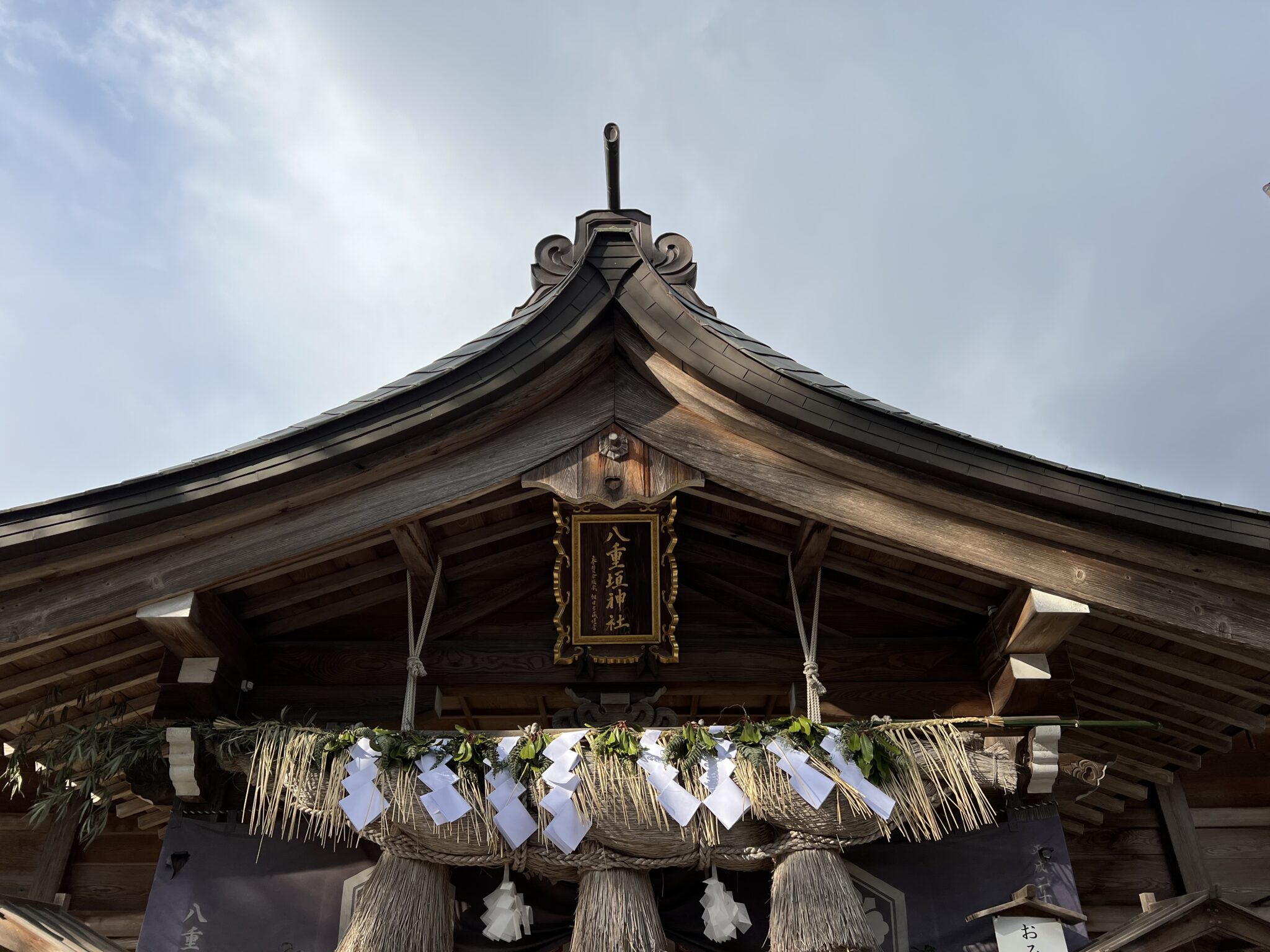
Since this area is very close to downtown Matsue, access by public transportation seems relatively easy, even though there may be fewer services.
Access
By car: About 6 minutes from Matsue Chuo IC on the San’in Expressway (Matsue Road).
By bus: About 20 minutes from JR Matsue Station, boarding at platform 4.
Gods
Susanoo-no-Mikoto, Inadahime-no-Mikoto, Ōnamuchi-no-Mikoto (Ōkuninushi-no-Mikoto), Aohata Sakusahi no Mikoto (Ancestor deity of the Sakusa priests)
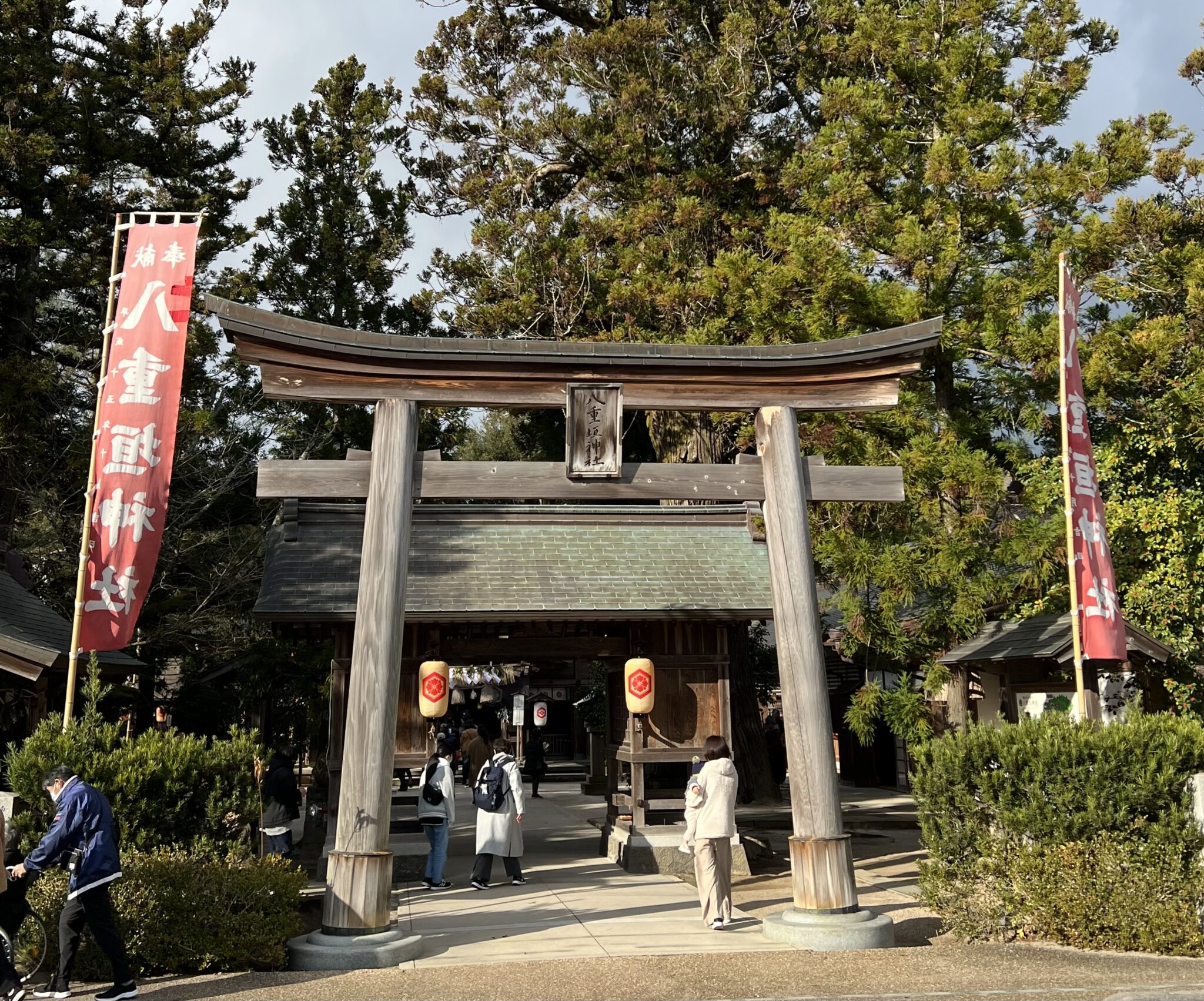
History
In Japanese mythology, after Susanoo-no-Mikoto defeated the eight-headed serpent Yamata-no-Orochi, he married Inadahime and built a palace in this land of Sakusa. The heavenly deity Susanoo-no-Mikoto and the earthly deity Inadahime-no-Mikoto are the revered great deities of matchmaking who were united in this region of Izumo. Yaegaki Shrine, which enshrines these two deities as its main gods, has been highly respected since ancient times by the imperial court, provincial governors, and feudal lords. It is recognized as one of the ancient and distinguished shrines in the sacred land of Izumo, known for its profound divine blessings.
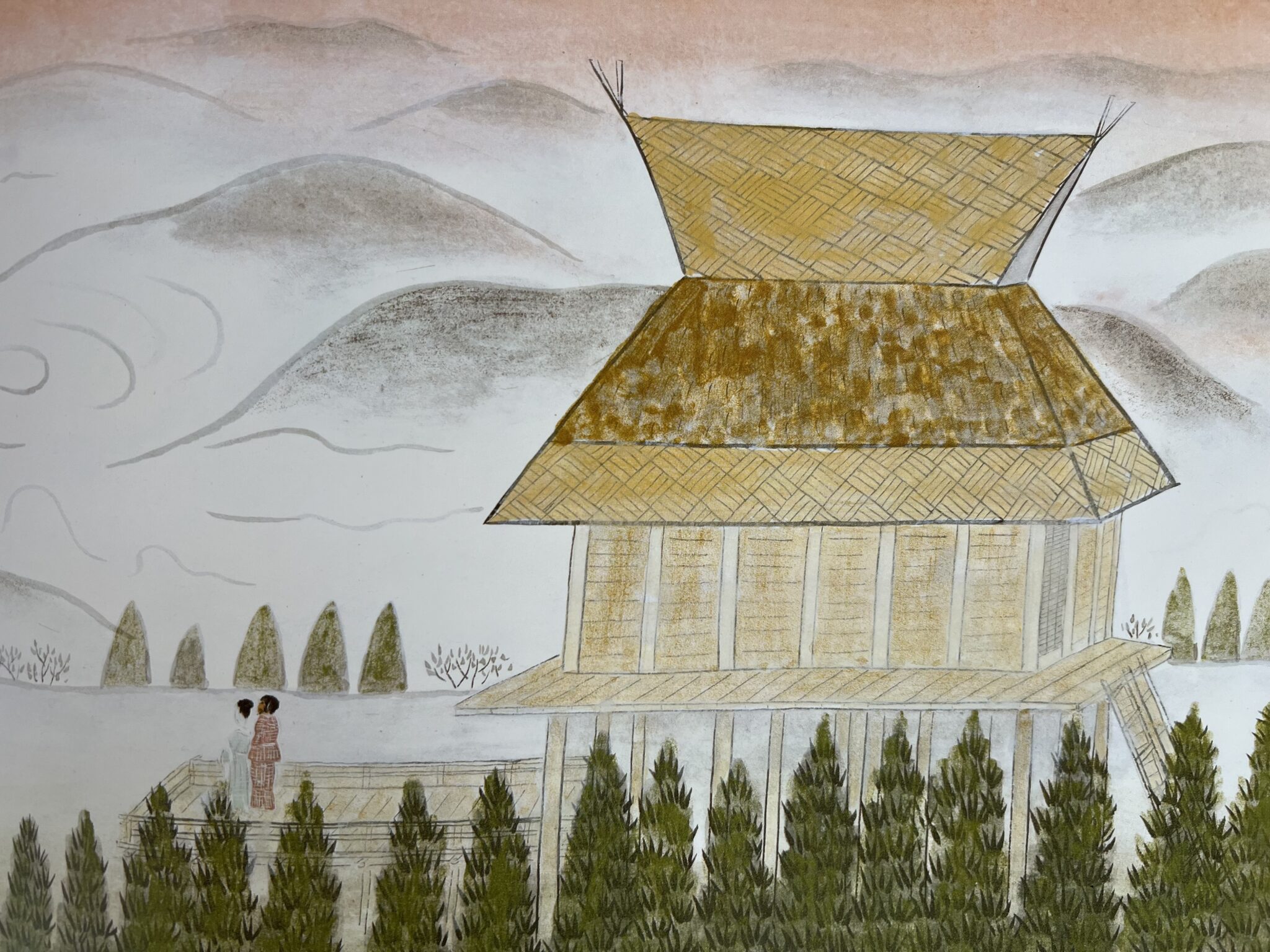
Divine Virtue / Divine Blessings, Spiritual Benefits
Fulfillment of Good Matches, Prayers for Safe Childbirth, Blessings for Fertility, Healing of Illness
Shrine Ground
After passing through the old wooden torii gate, you’ll find a purification fountain (temizuya) on your left. Cleanse yourself there, then proceed through the Zuishinmon gate, and you’ll see the main hall (haiden) right in front of you. Though not as large as Izumo Taisha, the grand shimenawa (sacred straw rope) here is also impressive and gives a refreshing sense of sanctity. After offering your prayers, pay the fee for the “Kagami-ike Fortune Paper” at the amulet office, then proceed to the right to receive the fortune paper and head towards the inner shrine (Okunoin).
Komainu – Guardian Lion-Dog
The guardian lion-dogs (komainu) made of Kimachi stone are located just inside the torii gate. Offerings are placed before them, showing how cherished they are. Kimachi stone is a slightly soft, yellowish granite sourced from Izumo, which may cause it to weather quickly. Many shrines in this area use Kimachi stone for their komainu. At Sada Shrine, for example, the komainu figures are also significantly weathered.

The stone monument with Yaegaki poem
On the left side of the main hall (haiden), in a wide garden of white sand, stands the famous stone monument inscribed with the “Yaegaki” poem. It is engraved with Japan’s oldest waka poem, composed by Susanoo-no-Mikoto after he defeated the great serpent and rescued Inadahime: “Many clouds arise, forming eightfold fences in Izumo to enclose my beloved wife.” This poem is the origin of the shrine’s name, Yaegaki(=eightfold fences). Additionally, there are many other stone monuments inscribed with waka poems throughout the shrine grounds, making it enjoyable to search for them.
- Other Shrines
Within the grounds, there are five other deities enshrined, arranged around the central hall (haiden).
Treasure repository
Facing away from the main hall (haiden), you’ll see a building on the right front where the important cultural property—a wooden panel painting depicting six deities, including Susanoo-no-Mikoto, Inadahime, and Amaterasu-Omikami—is displayed. This artwork is said to have been created by a court painter of the Heian period and was once housed in the main sanctuary, where only priests were allowed to view it. You can purchase an admission ticket at the amulet office, then remove your shoes before entering. The space is very small, and the only exhibit is this panel painting, but the satisfaction of finally seeing the real thing makes it worthwhile. Inadahime is truly beautiful.

Kagami pond and the inner shrine
If you follow the path to the left from the central hall (haiden), you’ll temporarily leave the shrine grounds, cross a small bridge, and enter the Sakusamori Forest beyond. This forest, enclosed by a spiritual barrier and home to sacred trees, is so dense that you feel as if you’ve stepped into the world of mythology. It is believed to be the place where Susanoo-no-Mikoto hid Inadahime by surrounding her with a fence of eight layers (Yaegaki) to protect her. As you continue along the small path within the forest, you will come upon Kagami Pond.
Fortune telling at Kagami pond
Place a coin on the fortune paper you purchased at the amulet office, and float it on the surface of the pond while praying for a good match. It is said that the faster the paper sinks, the sooner your wish will come true. On the day I visited, many people, from elementary school students to adults, were floating their papers on the pond. The pond seems to be fed by a spring, with very clear water that reflects the green shadows of the surrounding trees, creating a mystical and beautiful scene.
